 Last week during my tai chi class, I trained with a more experienced student. At the end of the class, my instructor informed me that I should tell my classmate, "Thank you, older sister" (in Chinese), not because Susan is older than I am, but because she's more experienced. I will spare you the details of how meaningful I find this in terms of the distinction between taekwondo and tai chi culture. I'm just mentioning it to explain why I was dwelling on the sister issue while reading Reflections on the Magic of Writing by Diana Wynne Jones this past week.
Last week during my tai chi class, I trained with a more experienced student. At the end of the class, my instructor informed me that I should tell my classmate, "Thank you, older sister" (in Chinese), not because Susan is older than I am, but because she's more experienced. I will spare you the details of how meaningful I find this in terms of the distinction between taekwondo and tai chi culture. I'm just mentioning it to explain why I was dwelling on the sister issue while reading Reflections on the Magic of Writing by Diana Wynne Jones this past week.
Reflections is a collection of Wynne Jones' short nonfiction pieces written for magazines, speeches, and professional groups over several decades. She collected them herself a few months before she died, meaning these articles were ones she felt had particular significance. One of the things I like about this collection is that because it isn't written and edited all in one piece, there is repetition here. The repetition creates recurring themes related to Wynne Jones' attitudes about her work.
But I really like about this collection is that so many of Wynne Jones' attitudes are ones I share. She talks about creating experiences with her writing. I've thought of writing as creating worlds. She objects to writing that is supposed to instruct. Dear heavens, how I hate that. Over and over again I'm finding things in this book that make me feel that I've found some kind of soulmate.
Oh, and though there are a couple of chapters here on heroes, if Wynne Jones even mentions The Hero's Journey, I missed it.
And, finally, the book concludes with an address one of her son's gave at her funeral in which he talks about the tweets they'd seen recently about his mother's books being comfort books for this one or that one. Wynne Jones' Chrestomanci novels are my Number One comfort books.
There's just been an amazing amount for me, personally, in this book, making me feel an incredible connection to this woman I will never know.
Viewing: Blog Posts Tagged with: 2012, Most Recent at Top [Help]
Results 26 - 50 of 303
Blog: Original Content (Login to Add to MyJacketFlap)
JacketFlap tags: Essays, nonfiction, Diana Wynne Jones, Reader response, 2012, Add a tag
Blog: Original Content (Login to Add to MyJacketFlap)
JacketFlap tags: nonfiction, 2012, Environmental Book Club, Add a tag

 The Plant Hunters by Anita Silvey turned out to be as marvelous as I thought when I started it last week.
The Plant Hunters by Anita Silvey turned out to be as marvelous as I thought when I started it last week.
The Plant Hunters deals with the naturalists who went all over the world hunting for new plants. While Silvey brings her book up to the present day, for the most part, she's dealing with seekers from the past, particularly the nineteenth century, a period when the search for new knowledge sent lots of people out into the unknown.
What Silvey does here that's so terrific is that she doesn't just write bio per chapter after bio per chapter. I thought that might be the case, after reading Chapter One, which is about Alexander von Humboldt. Instead, she organizes her chapters around topics. Say, Chapter 2 Why Did They Do It? While explaining why these people faced danger and made tremendous efforts to bring huge numbers of plants over long distances, she uses real people to illustrate her points. Every chapter is like that. They each are on a subject and the people involved get pulled in that way.
And the nineteenth century illustrations and the black and white photographs are so perfect.
The Author's Note has a great bit on how Silvey got the idea for this book while reading The Orchard Thief by Susan Orlean.
There's also a chapter on thieving westerners robbing other cultures of the crops they depended on. Well, no, that's not how Silvey put it. That's me. Those nineteenth century scholar/adventurers had a dark side, in my humble opinion.
This is a terrific book for older grade school students. It could even function as a quick introduction to this subject for much older readers. It might encourage a few plant hunters
Blog: Original Content (Login to Add to MyJacketFlap)
JacketFlap tags: nonfiction, 2012, Environmental Book Club, Add a tag
 |
| Add caption |
 I've only read the intro and first chapter of The Planet Hunters by Anita Silvey, but I have great hopes for it. I found myself getting excited while still on the first paragraph:
I've only read the intro and first chapter of The Planet Hunters by Anita Silvey, but I have great hopes for it. I found myself getting excited while still on the first paragraph:"One got eaten by tigers in the Philippines; one died of fever in Ecuador; one drowned in the Orinoco River; one fell to his death in Sierra Leone. Another survived rheumatism, pleurisy, and dysentery while sailing the Yangtze River in China, only to be murdered later. A few ended their days in lunatic asylums; many simply vanished into thin air."
Silvey isn't talking about the work of some kind of curse. She's talking about the consequences of amateur scholars following their passion for...plants. The nineteenth century appears to have been full of these kinds of people. Paleontologists. Egyptologists. And now botanists. I love them all. Well, not those guys who took boat loads of men to their deaths hunting for a pole. Trying to get some place doesn't grab me. Trying to acquire knowledge about the world most definitely does.
I'll keep you informed on this selection as I make my way through it.
Blog: Becky's Book Reviews (Login to Add to MyJacketFlap)
JacketFlap tags: YA Fiction, series books, Random House, YA Fantasy, 2012, review copy, YA Historical, books reviewed in 2014, Add a tag
The Dust Girl (American Fairy #1) Sarah Zettel. Random House. 304 pages. [Source: Review copy]
I enjoyed reading Sarah Zettel's Dust Girl. It's historical fantasy set in America in the 1930s. It starts in the tiny town of Slow Run, Kansas, but, the heroine Callie LeRoux won't stay put. The quest in Dust Girl very much reminded me of the quest in Rick Riordan's Lightning Thief. Less humor though. It isn't just the depression getting Callie and her family down, it's the dust bowl too. Their are whole sections of the U.S. truly devastated and overwhelmed. Even those who aren't farmers are suffering greatly. Callie and her mom are among the last living in their town. Everyone else has left, out of want or desperation. One day, her mom disappears in a dust storm. Callie is upset and confused. How could her mom vanish so suddenly? It doesn't seem natural, it seems, well, supernatural. And Callie is right. There are secrets to be uncovered. For one, Callie is only half human. Callie is given the tiniest bit of help before her journey begins, and, she even finds a companion to go with her willing to face anything and everything. But it won't be an easy or safe journey. The journey, of course, is to find her mother, and, to find her father, and to learn MORE about her heritage, who she is, and what "magic" if any she possesses.
I liked this one. I found it a very pleasant, very enjoyable, fun read. I liked Jack. I liked Callie. I liked meeting some of the not-so-nice characters. I liked trying to piece together the mystery. I look forward to reading more in this series.
© 2014 Becky Laney of Becky's Book Reviews
Blog: Original Content (Login to Add to MyJacketFlap)
JacketFlap tags: Biography, Picture books, nonfiction, Reader response, 2012, Environmental Book Club, Add a tag
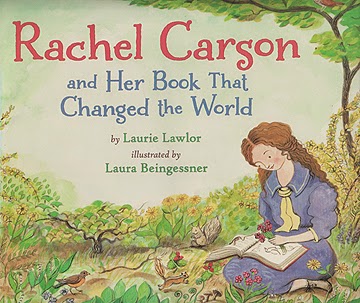 I found another good book for our club.
I found another good book for our club.I didn't expect to like Rachel Carson and Her Book That Changed the World by Laurie Lawlor with illustrations by Laura Beingessner as much as I did. Picture book bios are often problematic to me. They sometimes seem too old for picture book folks, too young for older ones, so who are they for? This one, not so much. Definitely for mid-grade school readers. Maybe third or fourth grade.
The first thing that struck me about this book is that very early on we hear that Rachel as a child explored the outdoors by herself and had a mother who had an interest in nature. This child got her start without any formal environmental instruction, such as we would want for children these days, and, yet, she turned into Rachel Carson.
Another thing I liked about this book, and, yes, this is just me, is that it describes a woman's story. Carson as a young woman had needy family to deal with. As often happens with achieving women of her era, she had help. In her case, her mother hustled to pull together money for school. She was encouraged by a female college professor. A male superior at the Bureau of Fisheries advised her to submit work to The Atlantic. She was a professional woman without a personal family. If you read the Epilogue, you'll find that after Silent Spring was published critics referred to her as "an hysterical woman." Someone asked "why a spinster with no children was so concerned about genetics."
Okay, so maybe I got into this story because of the feminist angle I read into it. But, really, the part in the beginning about simply growing up enjoying the outdoors was very significant, too.
Love the period illustrations, too.
Blog: Becky's Book Reviews (Login to Add to MyJacketFlap)
JacketFlap tags: family, series books, brothers and/or sisters, J Fiction, 2012, J Realistic Fiction, Houghton Mifflin Harcourt, MG Fiction, library book, books reviewed in 2014, MG Realistic Fiction, Add a tag
The Bell Bandit. Jacqueline Davies. (Lemonade War #3) 2012. HMH. 192 pages. [Source: Library]
The Bell Bandit is the third book in the Lemonade War Series. The novel opens with Evan, Jessie, and their mom going to Grandma's house to celebrate the holidays--New Years, to be precise. In the Lemonade Crime, Davies hinted that Grandma's memory was declining. She sent Jessie two copies of Mark Twain's The Prince and the Pauper. In the subsequent four months or so, things have gotten so much worse! Though I suspect the mom was a bit clueless at how much her mom had lost already.
Jessie and Evan are a bit confused as to WHY their Grandma burned the kitchen down. She'd always been a good cook before. Yet here Grandma was burning holes in walls, ceilings, and floors. And not remembering doing it. Blaming others. But even more disturbing to Evan and Jessie is Grandma forgetting them. Sometimes she remembers Jessie but not Evan. She can be quite cruel and want "that strange boy" to go away, to leave, that she doesn't like him or want him around. Sometimes she forgets Jessie too. Jessie who has always had a hard time reading people, understanding emotions and making solid connections, is truly confused by it all.
By far, this is the most serious the series has gotten. The book deals very honestly with the subject. But. It has its lighter moments. In The Bell Bandit, Jessie teams up with a neighbor, Maxwell (he likes to call himself Maxwell Smart), to solve the mystery of who stole the neighborhood bell. That mystery, of course, is solved by the end.
I continue to like Evan and Jessie. The mom continues to not enter into the story very much. Evan seems to be placed in several awkward moments where he's almost given full responsibility for watching and handling his Grandma. I'm not sure if the mom is truly failing to understand her mom's true condition OR if she's just not very bright. But Evan finds these situations overwhelming because Grandma, as much as he LOVES her, is more than he can handle.
© 2014 Becky Laney of Becky's Book Reviews
Blog: Becky's Book Reviews (Login to Add to MyJacketFlap)
JacketFlap tags: 2012, review copy, Korean war, books reviewed in 2014, war, Historical Fiction, adult fiction, Historical, Add a tag
Tendrils of Life: A Story of Love, Loss, and Survival in the Turmoil of the Korean War. Owen Choi. 2012. Princeton Falcon Press. 408 pages. [Source: Review copy]
Tendrils of Life is historical fiction set in Korea. Most of the story, though not all of the story, occurs during the early years of the Korean War, 1950-1953. Flashbacks. Tendrils of Life has plenty of flashbacks. These take readers back even further, several decades further in some cases. These flashbacks do place the "main story" into context. I will say that there were times I was confused, but, by the end, I saw how the pieces of the puzzle fit together and I understood, for the most part, WHY the flashbacks were so important to the overall story. It is a complex story. I won't lie. For those unfamiliar with the Korean War--like me--this one may prove challenging: not impossible, just challenging. I believe it seeks to provide some answers, some insight, into the war itself: the history and politics. Trying to explain a war is not ever easy, and, I appreciate the complexity of this one.
The characters. I felt all the characters had strengths and weaknesses. I felt they were human which is the best compliment I can give any author. Tendrils of Life is at best bittersweet, if I'm being honest, more bitter than sweet. It felt bleak, very bleak, but its an honest bleakness and not mere manipulation.
Tendrils of Life was a bit outside my comfort zone, but, I am so glad I read it.
© 2014 Becky Laney of Becky's Book Reviews
Blog: Becky's Book Reviews (Login to Add to MyJacketFlap)
JacketFlap tags: family, Summer, chapter books, J Fiction, 2012, J Realistic Fiction, MG Fiction, library book, Disney-Hyperion, books reviewed in 2014, Add a tag
Ivy Honeysuckle Discovers the World. Candice F. Ransom. 2012. Disney-Hyperion. 160 pages. [Source: Library book]
I definitely enjoyed meeting Iva and Heaven Honeycutt. These two are double first cousins. There is a LOT of tension in their relationship. Their mothers (Aunt Sissy and Aunt Sissy Two) wanted to time their pregnancies so that all their children could be best friends with each other. Arden and Lily Pearl are Iva's sisters. Hunter and Howard are Heaven's sister and brother. Ransom does a great job at bringing ALL six children to life in her book. Both families feel completely believable. I also enjoyed the community that this one is set in. Several neighbors enter into the story in lovely ways.
Iva and Heaven are different. Different from one another, yes, but also different from other children their own age. Neither girl truly excels in making and keeping friends.
Heaven loves going to yard sales. She likes buying things for her hope chest. When she's not looking for embroidered pillow cases and other dainty household items, she might be found praying or assisting with vacation church school.
Iva dreams of being an adventurer, she longs to discover something WONDERFUL in her hometown of Uncertain, Virginia. She has a plan. Once this girl has a plan, she likes to STICK to it. But it isn't always easy to stick to plans when plans don't take into account every little thing!
This is a summer adventure. I would definitely recommend this one!
© 2014 Becky Laney of Becky's Book Reviews
Blog: Becky's Book Reviews (Login to Add to MyJacketFlap)
JacketFlap tags: books reviewed in 2014, Nonfiction, Candlewick, YA nonfiction, 2012, adult nonfiction, review copy, Add a tag
Show Me A Story! Why Picture Books Matter. Conversations with 21 of the World's Most Celebrated Illustrators. Compiled and edited by Leonard S. Marcus. 2012. Candlewick. 304 pages. [Source: Review copy]
Show Me A Story! Why Picture Books Matter is a collection of interviews. Leonard S. Marcus has spent decades interviewing illustrators. In this collection, he shares his interviews with 21 illustrators. Some of the illustrators are also authors. The long list includes: Mitsumasa Anno, Quentin Blake, Ashley Bryan, John Burningham, Eric Carle, Lois Ehlert, Kevin Henkes, Yumi Heo, Tana Hoban, James Marshall, Robert McCloskey, Helen Oxenbury, Jerry Pinkney, Chris Raschka, Maurice Sendak, Peter Sis, William Steig, Rosemary Wells, Mo Willems, Vera B. Williams, and Lisbeth Zwerger. Chances are that if you've read any picture books in the past thirty years, you'll recognize a name or two from the list. I'll be honest, there were a few on the list who were new to me.
It is a book of interviews. Some of the interviews are older interviews. Some are newer, of course. Some interviews cover a greater number of books than others. A few just discuss the latest (at-the-moment) picture book published. Others do a better job of covering an artist's career, of touching on many, many books--often beloved books. In my opinion, the interviews vary in quality. I think some people felt more comfortable than others during the interviews. Some interviewees really gave it their all, and were very open and outgoing. Some interviewees I felt held back and were more reserved. It seemed like he had to really work hard to get answers from some. By far my most favorite, favorite, favorite interview was with James Marshall.
What I appreciated in this book is the discussion, the emphasis on how important picture books are, on how important good, quality art is in picture books.
Favorite quotes:
Picture books tell stories in a visual language that is rich and multi-leveled, sophisticated in its workings despite its often deceptively simple appearance. It is through the book's images that a child first understands the world of the story--where it is set, when it takes place, whether it's familiar or new. They read the characters' emotions and interactions in facial expressions and body language. They may notice secondary pictorial story lines happening alongside the main action, like a secret for them to follow. And nowhere is visual humor explored more fully than in the picture book. ~ David Wiesner
In my books, I don't want to teach. What I have done might better be described as "teaching without teaching"--providing the conditions that allow children to learn for themselves. ~ Mitsumasa Anno
Before I decided to go there [Cambridge], I thought, If I go to an art school I might stop reading, whereas if I go to university I know I won't stop drawing...as an illustrator, reading is an important part of what I do, so I think it turned out to be good training. ~ Quentin Blake
A picture book becomes a whole world if it's done properly. I'm very surprised that sometimes people don't understand this, or realize that the picture book is a true art form. ~ James Marshall
A good ending is inevitable, but it's also a surprise. ~ James Marshall
I'm quite suspicious of books that set out to teach things. A picture book, after all, is primarily a stepping-stone to reading. That is what one hopes will happen in the end. What a book must do is to make a child want to read it, to make him think: "Oh, gosh, now what's going to happen?"--and turn a page. ~ Helen Oxenbury
© 2014 Becky Laney of Becky's Book Reviews
Blog: Becky's Book Reviews (Login to Add to MyJacketFlap)
JacketFlap tags: books reviewed in 2014, dystopia, YA Fiction, Random House, YA Science Fiction, 2012, review copy, Add a tag
Starters. Lissa Price. 2012. Random House. 352 pages. [Source: Review copy]
I enjoyed this dystopian novel. Callie is our heroine. Early in the novel, Callie has to make a tough choice: should she rent out her body for profit and secure a life for herself and her younger brother, Tyler? Or should she continue the day-to-day struggle to survive when every single day brings danger and risk. Callie is older and stronger than her brother. If she goes to Prime Destination, it will be FOR him, not for greed. As you might have guessed, Callie DOES go to Prime Destination, she does sign the contract which allows Prime Destination to rent out her body to others (via neurochip). IN this society, "Enders" find enjoyment and thrills by renting the bodies of teenagers. The two are linked via the neurochip, but it is the Ender, the renter, who is in control of the young (newly made beautiful) body. Callie has signed on for three rentals, it will be the third that will change her life forever...
I enjoyed this one. I did. I enjoyed getting to know Callie AND the "voice in her head," Helena. I am looking forward to reading the second book!
© 2014 Becky Laney of Becky's Book Reviews
Blog: Becky's Book Reviews (Login to Add to MyJacketFlap)
JacketFlap tags: YA Fiction, series, YA Fantasy, J Fantasy, Scholastic, 2012, MG Fiction, review copy, MG Fantasy, books reviewed in 2014, books reread in 2014, Add a tag
The False Prince. Jennifer A. Nielsen. 2012. Scholastic. 342 pages. [Source: Review copy]
Last March, I read The False Prince and The Runaway King the first two books in Jennifer A. Nielsen's Ascendance Trilogy. It was love. Not just love, but LOVE, LOVE, LOVE. I considered myself lucky that I had waited until the second book in the series had been released. I didn't have to wait! I could continue reading right away! When I received a review copy of The Shadow Throne a few weeks ago, I was oh-so-tempted to read it right away. But I didn't. I thought the book would be even more satisfying, even more wonderful if I took the time to reread the first two books. It was worth the wait.
I thought it was love the first time around. I really, really did. But. If it's possible, I think I LOVED, LOVED, LOVED it even more the second time. The False Prince introduces the world and the characters so very well. And its a timeless fantasy story in many, many ways. Even knowing where the twists and turns were going, I still found myself very engaged with the story, still in love with its richness.
From my original review:
I thought this one would be good, but even I didn't expect it to be THAT GOOD. This book is WONDERFUL. Everything I wanted it to be! Readers first meet an orphan named Sage. When we meet him, he's on the run having just stolen meat from the butcher. He is "rescued" from the butcher by someone in the crowd, Connor. But is the rescue genuine? Connor goes with Sage to the orphanage and explains that he's just bought Sage. Sage soon meets other orphan boys his own age that Connor has bought from various orphanages in the land. He's taking them to his castle...
Sage is suspicious fearing that Connor and the men working for him are DANGEROUS. Yes, he could be beaten, he could be imprisoned, but he knows that he could also be KILLED if he displeases Connor. Does knowing this make Sage less defiant or outspoken? Not really.
Connor has a plan--an ambitious plan. The royal family has been killed, murdered, and no one knows the truth, yet. The second son was presumed dead at sea, but, what if one of the orphan boys could assume this second son's identity and become king? Connor wants the boys in competition with one another and in training to become the future king. In a few weeks time, he'll pick the "lucky" boy.
Sage wants to be the boy, for better or worse, perhaps knowing that to fail in this means certain death. But that doesn't mean he likes Connor or trusts him. He doesn't trust Connor...at all.
I loved spending time with Sage! I loved being introduced to this fantasy world!!! I loved the setting, the characterization, the writing!!! This is a magical, oh-so-satisfying read!
© 2014 Becky Laney of Becky's Book Reviews
Blog: Welcome to my Tweendom (Login to Add to MyJacketFlap)
JacketFlap tags: bullying, Friendship, school, graphic novel, middle school, camping, Groundwood Books, 2012, Montréal, Add a tag
Hélène has been dumped by her friends. Not only dumped, but they are actively making her life intolerable. Huddled in the hallways of school, snickering when she walks by, writing on the walls of the girls' bathroom. "Hélène weighs 216! She smells like BO?" There's nowhere to hide.
Hélène finds some solace in her reading of Jane Eyre. She reads better when her old friends aren't on the bus. If they are she can at least look like she's not listening even when she can't help but hear them.
Hélène doesn't want to burden her mother with what is going on. Her mother works so hard for the family, and Hélène doesn't want to add to her pile of things. But her mother does have to take her shopping downtown when it is announced that Hélène's class will be going to the woods to nature camp for four nights. Four night with Geneviève, Sarah, Anne-Julie and Chloé. And bathing suits will be involved.
Not surprisingly Hélène is selected into the tent of outcasts. Which is okay with her because at least it's quiet. But a chance encounter with a fox and noticing the empathy in someone's eyes combine to shift Jane's world of exile.
Exquisitely drawn, this is a book to be owned. And shared. I borrowed it from the library, but then quickly purchased the English and French versions. Jane's life is depicted in black and white, while the Jane Eyre portions are awash in blocks of color. I would buy this book for the panels on pages 58-59 and 74-75 alone. I look forward to reading the (original) French version to see what nuances might be different. This is a quiet book, but it is not to be missed.
Blog: Becky's Book Reviews (Login to Add to MyJacketFlap)
JacketFlap tags: Nonfiction, Scholastic, 2012, j nonfiction, 2014, review copy, books reviewed in 2014, Add a tag
Scholastic Discover More: Penguins. Penny Arlon. 2012. Scholastic. 80 pages. [Source: Review copy]
I believe this is the first book I've read in Scholastic's Discover More series, but, it won't be my last. In this short nonfiction book, young readers learn a lot about various kinds of penguins: rockhopper penguins, Fiordland penguins, snares penguins, African penguins, erect-crested penguins, chinstrap penguins, Humboldt penguins, Magellanic penguins, Adelie penguins, royal penguins, macaroni penguins, yellow-eyed penguins, gentoo penguins, king penguins, and emperor penguins. Included, of course, is much about their habitats: where they live, how they live, the dangers they face, the breeding and raising of their young, etc. This book is packed with photographs, and packed with rich I-didn't-know that facts! This book is so appealing, a good example of how nonfiction text can be appealing to readers of all ages.
I love the use of color photographs! I love the captions, fact boxes, table of contents, glossary, and index. Every two-page spread could potentially be read on its own making this one great for browsing.
Scholastic Discover More: Penguins Stickerbook. 2014. Scholastic. 16 pages. [Source: Review copy]
An interactive nonfiction sticker book focusing on penguins. Readers will, in addition to sticking stickers and reading jokes, learn basic facts about penguins: where they live, how they live, what they eat, what eats them, the penguin life cycle. There are plenty of photographs, plenty of stickers, plenty of facts, a few games, and a few jokes. For example, it includes "Top 10 Swimming Facts" in which readers learn among other things that: "penguins can hold their breath underwater for 18 minutes; penguins spend 75% of their lives in water; penguins will swim up to 185 miles round-trip in search of a good meal."
© 2014 Becky Laney of Becky's Book Reviews
Blog: Becky's Book Reviews (Login to Add to MyJacketFlap)
JacketFlap tags: YA Romance, Walker Books, books reviewed in 2014, YA Fiction, YA Historical Fiction, YA Fantasy, 2012, Add a tag
Scarlet. A.C. Gaughen. 2012. Walker. 292 pages. [Source: Library]
"Will Scarlet" is one of Robin Hood's best friends, a thief very good at what "he" does for the band. But what if "Will Scarlet" was just Scarlet--a young woman is disguise?!
I enjoyed this retelling of Robin Hood. Rob is young, as are his friends and fellow thieves. They have not fully matured into their heroic legends. Their mission to help the poor and needy is just getting started.
It is narrated by Scarlet, or "Scar." She's got a strong narrative voice, distinctive. (The grammar of it will either sweep you away or annoy you.) It was enjoyable to see the story through her eyes, to get to know John Little and Rob or "The Hood" through her eyes. (Also Much and Tuck). The villain of this one, besides the sheriff, is Guy Gisbourne. His presence plays a very important role in the retelling, in Scarlet's past and present.
I would definitely recommend this one. What I liked about this one was the potential, the promise. The characters--beyond Scarlet--are not developed well enough for this one to be AMAZING. But it works.
© 2014 Becky Laney of Becky's Book Reviews
Blog: Becky's Book Reviews (Login to Add to MyJacketFlap)
JacketFlap tags: Random House, 2012, MG Fiction, review copy, Korean war, j historical, books reviewed in 2014, Add a tag
True Colors. Natalie Kinsey-Warnock. 2012. Random House. 256 pages. [Source: Review copy]
I definitely enjoyed reading Natalie Kinsey-Warnock's historical novel, True Colors. This novel is set in Vermont, in the summer of 1952. The heroine of True Colors is Blue Spooner. (She absolutely HATES her name. Why did Hannah have to name her Blue? why?! Then again, why does Hannah have to name their new stray cat, "Cat"?!) Blue was a newborn baby left on Hannah's doorstep. There wasn't a note, explanation, or clues, at least not that have been revealed to our young heroine. Blue spends her time doing dozens of chores on the farm, fantasizing about finding her mother, and hanging out with her summer-time friend, Nadine. This summer has been extra difficult, perhaps, because Nadine is distant and sometimes haughty. She is a year or two older than our heroine, and Hannah assures her that Nadine is just "at that age" and that Blue will understand more when she's "that age." It's a summer of living and learning, Blue, for example, gets her first job and first paycheck. She also attends her first quilting meetings. She finds that she's good at listening and writing. (Sometimes she's a little too good at listening when she overhears a few things she shouldn't.) Family. Friendship. Community. It's a coming of age novel that touches on the bittersweet; I found it completely satisfying.
© 2014 Becky Laney of Becky's Book Reviews
Blog: Original Content (Login to Add to MyJacketFlap)
JacketFlap tags: 2013, Picture books, art books, Reader response, 2012, Add a tag
This is Tuesday, so I should be doing a time management post. However, I'm recovering from a minor illness during which I've been working in sprints. I'm still lolling about reading and sleeping and saving my sprinting time for a work in progress. However, Blogger is letting me access it from my desktop today, which it hasn't done for a couple of weeks. That means I can get to my image file and finally upload this picture book post I did several weeks ago and have been saving.
I did a little art picture book binge recently. One book would be classified as an "art book" by just about anyone. The other I'm classifying as an art book because, well, this is my blog. I can classify anything anyway I want here.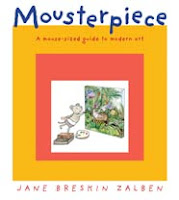
Modern Art for Kids. And Me.
I don't know how kids feel about Mousterpiece by Jane Breskin Zalben, but it sure helped me develop a better understanding of modern art. Do kids need to know about modern art? Do they need to know about art at all? Does anyone? Personally, I think art is a form of communication and being able to comprehend and enjoy it is as valuable as being able to comprehend and enjoy any other kind of communication. On top of that, like other types of communication it expresses something about the culture that produces it, so it has a place in the study of history.
Okay, enough pontificating. Mousterpiece is about a mouse name Janson who lives in a museum and stumbles upon the modern art room. She is amazed and inspired and begins painting in the style of the paintings she sees there. This is a story about appreciation. There is no push to teach artists or styles or names of paintings. All we see are Janson's paintings done in the style of Warhol, Matisse, Picasso and many more. Anyone (probably adults like myself) who wants a very quick and easy lesson on the artists Janson is inspired by can turn to a four-page spread at the back of the book. It's one of the best Notes sections in a picture book that I've ever seen.
Narrative in Art
A piece of art often expresses a narrative, even when it is abstract rather than representational, which is probably its main attraction for me. Bluebird by Bob Staake is an example of a picture book that's narrative is expressed totally through art. All the illustrations are done in shades of blue and gray and while the work could be called representational, in that it represents what it is and we can recognize it, it's not all realistic. The human figures, for instance, are cartoonish but fit in with the overall settings in which they're placed.
While I'm not particularly fond of the narrative told in these pictures (I find it a little "important" and even somewhat predictable in the way important children's books can be), it is a really fine example of art communicating story. So much so, in fact, that in the early pages I found myself going, "What? What's going on here?" It wasn't until the disturbance came to the main character's world (the bluebird's? the child's?) that I became engaged. Because disturbance is the beginning of story.
By the way, Bluebird is mentioned in one of those What Makes a Good Picture Book About articles in the most recent issue of The Horn Book. Giving you the whole title would be a bit of a spoiler for Bluebird, but the article is on-line, so those of you who don't mind spoilage can follow the link and read it.
Blog: Becky's Book Reviews (Login to Add to MyJacketFlap)
JacketFlap tags: dystopia, YA Fiction, YA Science Fiction, 2012, Houghton Mifflin Harcourt, review copy, books reviewed in 2013, Add a tag
Middle Ground. Katie Kacvinsky. 2012. Houghton Mifflin Harcourt. 336 pages. [Source: Review Copy]
Middle Ground is the sequel to Awaken. Maddie, our heroine, has had her one last chance to conform. So when she brings attention to herself in L.A. by speaking out against virtual school, she ends up in a detention center; her sentence is for six months. Most of the novel focuses on the detention center, and on how corrupt the system is. Will Maddie survive the torturous rehabilitation process?! Can she hold onto who she is and what she believes in most?
I really have enjoyed this series of books. I liked Kacvinsky's focus on the dangers of technology and addiction. It isn't that technology is bad if used responsibly, but, it can be so addictive. In this future world, technology is used to keep the populace content and conformable--to keep them from thinking, questioning, and possibly rebelling.
There is a romance, but, to me this is a secondary story almost.
© 2013 Becky Laney of Becky's Book Reviews
Blog: Becky's Book Reviews (Login to Add to MyJacketFlap)
JacketFlap tags: books reviewed in 2013, biography, memoirs, 2012, adult nonfiction, 1968, library book, Add a tag
Below Stairs: The Classic Kitchen Maid's Memoir That Inspired Upstairs, Downstairs and Downton Abbey. Margaret Powell. 1968/2012. St. Martin's Press. 224 pages. [Source: Library]
Below Stairs is one of two memoirs by Margaret Powell. As a young teen--fifteen, I believe--she entered service. (She left school to begin working to support her family a year or two earlier however.) Her first positions in service were as a kitchen maid. She later promoted herself to cook and sought out other positions with other families. The book tells of her experiences and shocks. One shock, for example, was when she found out she was to iron the shoe laces every morning in addition to polishing the shoes. It's a detailed look at work. Work as a maid is anything but fun, glamorous, exciting. Dreary, repetitive, exhausting comes more to mind. This memoir does not focus on any particular wealthy family; it is not a dramatic romance like Downton Abbey.
I enjoyed reading Below Stairs. I found it to be a quick read. I liked that Powell enjoyed reading and tried her best to read what she could, when she could, even though there wasn't always a lot of free time. She worked very long hours, had very little time to herself, and was at times discouraged from seeking out books and wanting 'more'.
© 2013 Becky Laney of Becky's Book Reviews
Blog: Original Content (Login to Add to MyJacketFlap)
JacketFlap tags: nonfiction, Reader response, 2012, time management for writers, self-discipline, Time Management Tuesday, Add a tag
Early on in my time management study I became interested in discipline, how becoming disciplined can help us manage time. (It probably would help us manage just about everything else in our lives, but I only discuss time management at this blog.) What I didn't do when I was mulling over discipline was carefully define it. That is always a mistake in my experience. Discipline, as it turns out, involves training and maintaining behavior through control. That is a disturbing idea if you're applying it to others. Personally, I love it when applying it to myself. I love the whole idea of training. I'm shakier on the control part, as in self-control, but, hey, that's something I can train for, right?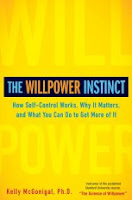 Which brings us to The Willpower Instinct: How Self-control Works, Why It Matters, and What You Can Do To Get More Of It by Kelly McGonigal. I mentioned McGonigal's name so frequently in the Situational Time Management Workshop I led earlier this month that I finally suggested we could use the name as the basis of a drinking game. The fact that I would even think of such a thing indicates that I need a whole lot more discipline and self-control.
Which brings us to The Willpower Instinct: How Self-control Works, Why It Matters, and What You Can Do To Get More Of It by Kelly McGonigal. I mentioned McGonigal's name so frequently in the Situational Time Management Workshop I led earlier this month that I finally suggested we could use the name as the basis of a drinking game. The fact that I would even think of such a thing indicates that I need a whole lot more discipline and self-control.
McGonigal never actually writes about time management. She writes about goals of all kinds, especially those involving changing behavior, and using willpower to achieve them. Well, managing time is both goal and behavior. There are a number of things she has to say that can apply to managing time, particularly for writers.
A few examples:
- People who are distracted have poor impulse control and are less likely to be able to stay on long-term goals. Many writers work out of their homes and have trouble maintaining a strong barrier between their professional and personal lives. Personal life distractions undermine our ability to stay on task.
- Thinking in terms of being "good" or "bad" relating to a goal undermines willpower. For instance, having been "good" and accomplishing a great deal this morning can be used as justification for being "bad" and not working this afternoon.
- We tend to think of the future as a wonderful place where we will accomplish great things. Thus, believing we'll feel more like working tomorrow or will get a lot done tomorrow justifies taking today off.
- Willpower failures and successes are contagious. A strong argument for writers' groups and group writing projects like NaNoWriMo.
- Giving in to the What-the-Hell-Effect when experiencing setbacks. We actually lose valuable work time when that happens.
This book has masses of material that can be applied to managing writing time, even though it's not about managing writing time at all. It's a marvelous aid for those of us who are interested in training for self-control.
Blog: Original Content (Login to Add to MyJacketFlap)
JacketFlap tags: fantasy, Reader response, 2012, Add a tag
I've had a very up-and-down relationship with the Artemis Fowl books. I was enthusiastic about the first book. Though I loved Holly Short in book two, I thought there were issues with point of view. Third book...disappointing. Evidently I didn't even want to write anything here about the fourth book. With the fifth book, I was happy again. Happier, anyway. It appears that I missed book six and wasn't crazy about book seven.
Was there a book in which Artemis went into space?
Oh, well, the series/serial is done now, and the wrap up, The Last Guardian, is quite good. We do have the choppy story line in which we swing back and forth between worlds/characters, which has appeared in earlier books. The side trip regarding Foaly's wife seemed totally unnecessary, for instance. It did give us a chance to be with Foaly, though, and who doesn't like Foaly? I also liked Artie's little brothers. Does anyone else see potential for an early reader series about criminal genius preschoolers?
The Artemis Fowl books are fantasy thrillers with humor, and with this concluding volume we are provided with a big thrilling threat for Artie to overcome. I think the actual ending of the book gives readers a chance to have their cake and eat it, too, which I'm not complaining about.
Blog: Becky's Book Reviews (Login to Add to MyJacketFlap)
JacketFlap tags: YA Fiction, YA Historical Fiction, YA Fantasy, J Historical Fiction, J Fiction, J Fantasy, 2012, Penguin USA, library book, books reviewed in 2013, Add a tag
Chronicles of Egg #1: Deadweather and Sunrise. Geoff Rodkey. 2012. Penguin. 288 pages.
What I enjoyed most in Geoff Rodkey's novel, Deadweather and Sunrise, (the first in the Chronicles of Egg series) was the writing or storytelling. For example, I loved how this pirate-adventure (set in an alternate--though at times familiar--world) began:
"Nobody lived on Deadweather but us and the pirates. It wasn't hard to understand why. For one thing, the weather was atrocious. Eleven months out of twelve, it was brutally hot and humid, with no wind at all, so on a bad day the air felt like a hot, soggy blanket smothering you from all sides. And the other month was September, which meant hurricanes. Then there was the volcano. It hadn't actually blown in ages, but it belched smoke and shook the earth enough to scare away anybody who might've overlooked the pirates and the weather."There are plenty of descriptive details in this coming-of-age adventure quest.
Egbert (Egg) is often mistreated by his immediate family (his father and older brothers). Kindness and compassion being foreign concepts to him. He's only known one way of being treated, only one way of "being" or "belonging" in a family. So when life as he knows it changes dramatically, he's at a loss. His ENTIRE family went up in a hot-air balloon, never to return. They are presumed dead after several weeks of presumed searching. The man who takes Egg into his own home and introduces him to his own family has layers of secrets as Egg discovers. There is one person that Egg comes to love dearly during his stay. The daughter, Millicent. She's an interesting character, in a way. And I appreciated her perhaps a little more than the other sidekick, Guts.
If you enjoy action-adventure stories with secrets, mysteries, pirates, and an ultimate hunt for treasure, then this may be a good match.
© 2013 Becky Laney of Becky's Book Reviews
Blog: Becky's Book Reviews (Login to Add to MyJacketFlap)
JacketFlap tags: brothers and/or sisters, J Fiction, J Fantasy, Scholastic, 2012, review copy, books reviewed in 2013, Add a tag
Whatever After: Fairest of All. Sara Mlynowski. 2012. Scholastic. 170 pages.
Abby and Jonah are modern day children traveling--at least in this first book--through a magic mirror to the land of fairy tales. Abby and her brother Jonah accidentally ruined the story of Snow White when they prevented her from eating the witch's poisoned apple. Now, they must come up with a way to set things right, and introduce Snow White to her Prince Charming (Prince Trevor). Of course, this won't be an easy task, but with a little teamwork, anything can be accomplished.
I liked this one. After reading heavier books like Sever and The Wall, it is nice to have something so deliciously light and completely non-serious.
Read Whatever After: Fairest of All
- If you're looking for a new series to introduce to young readers (age 8+)
- If you are looking for a new fantasy series for the youngest of readers
- If you enjoy fairy tale retellings AND children's books (this is NOT a YA book; it is clearly a children's book.)
© 2013 Becky Laney of Becky's Book Reviews
Blog: Becky's Book Reviews (Login to Add to MyJacketFlap)
JacketFlap tags: HarperCollins, family, coming of age, J Fiction, J Fantasy, 2012, library book, books reviewed in 2013, Add a tag
Bliss. Kathryn Littlewood. 2012. HarperCollins. 374 pages.
I enjoyed reading Kathryn Littlewood's Bliss. This middle grade fantasy was quite fun. Bliss is set in a small town where the Bliss family has a bakery. The parents have named their children: Thyme (Ty), Rosemary (our heroine), Sage, and Parsley (Leigh). The Bliss family has a secret, a secret that Rosemary hasn't always known. The family is magical, their is a bit of magic in each recipe. These magical spells help the town run smoothly. Soon after the novel begins, the parents are called away to another town to handle an emergency. The parents leave their children and Chip in charge of the bakery. Though Rosemary has recently been trusted with a key, she's also warned by her parents NOT to look into the family's secret cookbook. "Aunt" Lily has been waiting for such an opportunity. Rose's parents haven't been gone very long at all when this new relative appears ready to help them all. Is she trustworthy? Well, Rosemary doesn't really think so. But. She sure does know how to flatter every single member of the family. NO one has ever made Rose feel so special...
Most of the book is the misadventures resulting when the children are disobedient and try to do magic on their own. Things get quite messy!
Read Bliss
- If you enjoy children's books with a cooking theme
- If you enjoy children's fantasy novels
Blog: Original Content (Login to Add to MyJacketFlap)
JacketFlap tags: Reader response, 2012, YA, historical fiction, fantasy, Add a tag
In his Author's Acknowledgments at the end of Dodger, Terry Pratchett calls the book historical fantasy, not historical fiction, because he's tweaked some historical material. He moved some people who actually existed in the nineteenth century to a different point in the nineteenth century, for instance, and put the offices of a real newspaper on Fleet Street because he couldn't determine where it actually was located. I suspect there are many historical novelists who've done far worse without flinching and got nowhere near as good a result as Pratchett gets here.
Dodger is an amazing combination of character and setting. The plot, maybe, is a little simple. To me, the most fantastical element in the book is the way the wonderful Dodger makes his way up the ladder in life. However, that may be a play on the work of Charles Dickens, whose books I have very little knowledge of. Dickens appears as a character in Dodger, and I'm making an assumption that Dodger was inspired by Dickens' own Artful Dodger. Though that's a stretch for me because I haven't read the book in which he appears. Dodger's success in life, as a result of his own resourcefulness, innate talent, and goodness, may also be something that occurs in nineteenth century English fiction. Just guessing.
You often read about world building in science fiction and fantasy. But every book has an imaginary world, even if it's set in 2013 America. Historical novels, in particular, have worlds that require intense work. Dodger's is incredible. You have place, you have sociology, you have language, you have clothing, you have attitude. You have everything you require for a world.
I rarely think to comment on covers. But I've noticed that Tanita Davis and Sarah Stevenson do at Finding Wonderland, and I do have some thoughts about Dodger's. While the American cover (see above) makes for a beautiful book object, I think it's misleading. The character looks very young. He's around seventeen in the book, and while he seems inexperienced in terms of not knowing the ways of the moneyed classes, he is, in his own way, a man of the world. That's why he's able to do the things he does.
The British cover may be less attractive, but I think it gives a better feeling of the character.
Blog: Becky's Book Reviews (Login to Add to MyJacketFlap)
JacketFlap tags: YA Romance, Houghton Mifflin Harcourt, books reviewed in 2013, YA Fiction, 2012, YA Supernatural, review copy, YA Historical, Add a tag
Grave Mercy. Robin LaFevers. 2012. Houghton Mifflin Harcourt. 560 pages.
Last summer, I reviewed Robin LaFevers' Grave Mercy. It was LOVE. To sum up Grave Mercy in many words: Politics. Romance. Drama. Dysfunctional Families. Poison. Murder. Betrayal. Mystery. Suspense. To sum it up in just two: assassin nuns. The novel is set in Brittany in the late 1480s.
Ismae, our heroine, is one of Death's handmaidens. She's a trained assassin, trained by a convent of nuns dedicating their lives to serving St. Mortain (Death). The nuns are loyal to the Duchess of Brittany, and the victims are often her political enemies--foreign or domestic--those that pose the greatest threat to Brittany's independence.
While we do see her first few jobs carried out, most of the novel focuses on one job in particular. The abbess wants her to team up with Duval, the Duchess' older brother and her most trusted friend and advisor. She's to pose as his mistress, and travel with him to the Duchess' household. There she will "help him" find any possible traitors...
I wanted to reread Grave Mercy because the second novel in the series, Dark Triumph, is releasing soon. I thought the second novel would read better if I took the time to reread the first novel. And I think this was very beneficial. Especially since this is a novel heavy in politics. While I read Grave Mercy in one night the first time, I took my time for the reread. I think I was better able to absorb the politics at a slower pace. I was able to focus more on the minor characters as well. The first time, it was ALL about the romance--that was the only thing I cared about. This time, I was able to appreciate the story as a whole.
Read Grave Mercy
- If you're a fan of Robin LaFevers
- If you're a fan of historical romance, with a fantasy feel to it (mythology/supernatural)
- Also if you're a fan of mystery/suspense/political thrillers
View Next 25 Posts







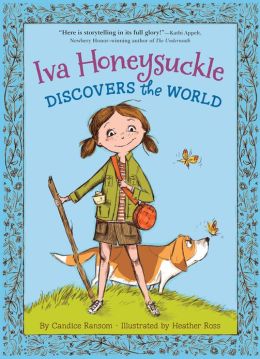


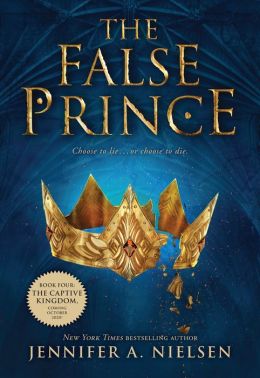



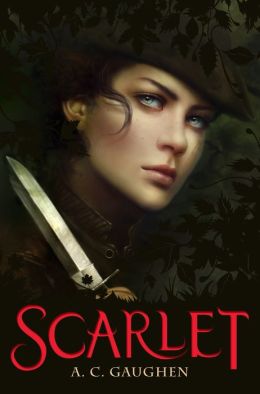
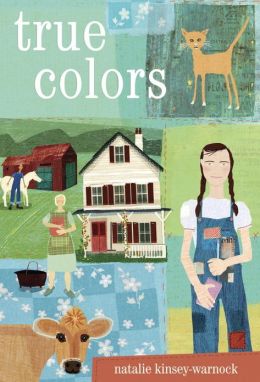
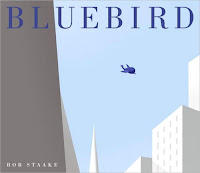
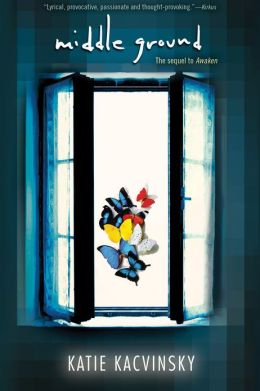
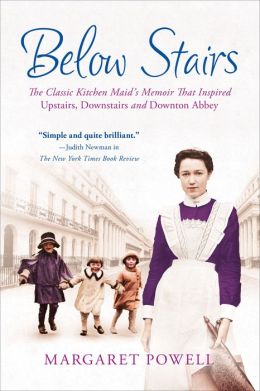
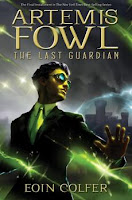
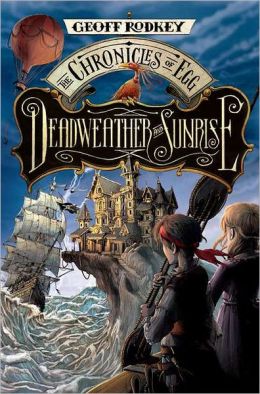
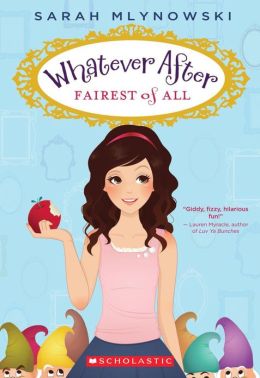
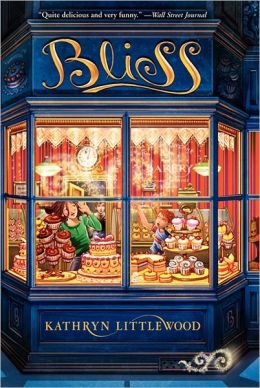
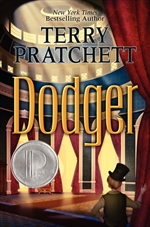
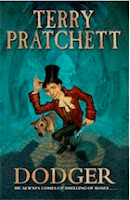
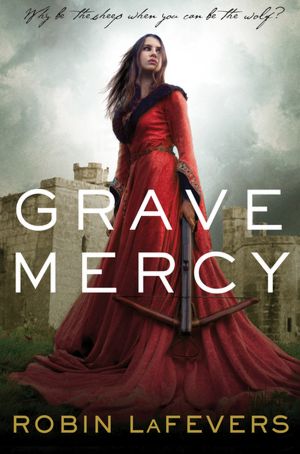
If there's a good thing to binge on, it is definitely picture books :) Thanks for sharing these two great ones with the KLBH!